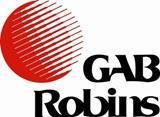The loss adjuster market has evolved dramatically over the past two decades, and the people now at the top have had to adapt quickly. Insurance Times talks to some of the key personalities in the sector about their career journey, their business goals and the challenges the sector must face
Undoubtedly, the claims adjusting world is facing a turbulent period, as players in the sector grapple with fast-changing client needs, private equity demands, the prospect of increasing consolidation and a skills shortfall.
The sector has broadened its scope considerably over the past 20 years, with many leading figures now preferring the term ‘claims management solutions’ to define the wide range of services now offered.
Here, Insurance Times presents the key industry figures steering the sector. While some have contrasting backgrounds and different views of emerging trends in the sector, all have one thing in common: they believe their company is set to play a central role in the insurance claims space of the future.
Benedict Burke, chief executive, Crawford UK
After three decades in the sector, chess aficionado Benedict Burke has become one of the best-known names in the business.
Born in Liverpool to an insurance broker father, Burke had an early introduction to claims. “Insurance was at the heart of our family, and clients often came to the house at weekends. It was a family-driven business,” he recalls.
While brother Dominic would later take over the firm, going on to head top-50 broker Jardine Lloyd Thompson, Burke veered towards the claims world, joining GAB Robins as a trainee when he graduated from university in 1981.
“I would have enjoyed life as a broker, but I enjoyed the idea of solutions provision,” he explains. “Sorting out and understanding the often very complicated issues around an insurance claim seemed to me like a puzzle, and that is what attracted me.”
Burke rose through the ranks of GAB Robins, becoming chief operating officer in 2000. He left in 2003 to become managing director of Crawford, and five years later scooped the top job, an achievement that finally put paid to years of family rivalry. “Both my siblings were already chief executives, and at Christmas they used to call me the ‘nearly man’,” he laughs.
He identifies the principal challenges facing loss adjusting as keeping tabs on constantly evolving customer needs while ensuring the looming skills gap in the sector is closed, and argues that trade body CILA should join with the CII to attract greater talent to the sector.
With an annual UK revenue of £80m, Burke is steering the company towards the goal of achieving the £100m target within three years. He predicts that the future will present new opportunities as cyber risks and supply chain issues come to the fore. This, he believes, will see global players like Crawford prosper while niche players struggle with changing demands and compliance issues.
Chris Hall, managing director, QuestGates
Chris Hall began his insurance career in Commercial Union in Edinburgh in 1975 and jokes he was quickly lured into the claims side with the “promise of a company car”.
But there were other attractions too. “From my point of view, the claims department was the sharp end of the business where you got to see the most interesting stuff.”
In 1979, Hall joined McLaren Dick & Co as a trainee adjuster and stayed there for more than 20 years, citing his promotion as manager in 1986 and then director in 1993 as two major career highlights. His low point came in the aftermath of the ill-fated merger of the company with Capita.
“There was obviously a lot of hope and opportunity around that, and unfortunately for both sides it didn’t work out – it was a bad acquisition for Capita and it was the wrong deal for McLarens as a business. That was a huge disappointment,” he admits.
But he is philosophical about the failure, arguing that the experience forced him to break out on his own and found QuestGates in 2003. Specialising in niche claims in areas including liability and counter-fraud, Hall grew the business from around £500,000 turnover in its first year to its current level of £10m. He believes the company’s specialist edge has a distinct advantage over its bigger volume-driven rivals.
“The bigger players are dealing with high volumes of work where price is absolutely vital – it is all about process, and that results in massive challenges,” he says.
Hall adds that his company intends to stick to a target of 10% “controllable growth” a year. “We don’t have any venture capitalists telling us what to do, so there is nothing that says we have to grow to meet external targets.”
Nowadays, very little keeps him awake at night. “When you are your own boss, all the solutions are in your own hand,” he says.
Stewart McCulloch, chief executive, Garwyn
Five days into the top job at Garwyn, and Stewart McCulloch describes himself as arriving slap-bang from “planet broking” into the heart of the loss adjusting world. But he believes he has a distinct edge over many other would-be candidates with years of experience in the sector.
“Coming from outside loss adjusting, I have some very complementary experiences that mean I question things, can shake things up a little bit and hopefully will make Garwyn a little more innovative and edgy,” he explains.
Raised in Coventry, McCulloch trained as an accountant, going on to join PricewaterhouseCoopers for nine years before he embraced the well-trodden route of “falling into insurance”. He was head-hunted by Willis to become service development director, and from there went on to take the top job at Alexander Forbes and Lockton. McCulloch looks back on the merger of these two firms, along with becoming chief executive at Garwyn, as his main career highs so far.
He believes there are many parallels between the challenges facing the broking sector a decade ago and those confronting loss adjusters today, including a greater influx of venture capitalists and the spectre of increased regulation.
“I think it is an advantage that, in the past 10 years, I have worked in very successful venture capitalist companies that have gone through change,” he says.
Garwyn’s turnover is currently £15.5m and McCulloch admits that he has been brought on board to tackle the company’s “relatively modest” growth in revenue and boost business. “My job at Garwyn is to get it into a new era and build on its excellent position as the premier liability adjuster in the country.”
Charles Crawford, chief executive, Davies
Charles Crawford’s decision to join Royal Insurance after leaving school was driven by a desire to take one step away from the pack. “I didn’t want to be a boring lawyer or accountant or something like that – I decided I wanted to do a professional qualification in something that was a bit different,” he says.
After seven years of learning the ropes, he joined the “upstart insurgent insurance company” Churchill Direct, getting to grips with the roles of sales director and IT director. In 2003, RBS bought the company and Crawford went on to become managing director of the partnerships and international business. Earlier this year, he jumped ship to head Davies.
“I decided that 16 years was a long time to work in the same location, and it was time to do something different,” he says. “The role in Davies came along, and I was attracted by the idea of a private equity business and running my own show.”
He believes that one of the main challenges that lie ahead for the sector is demonstrating to insurers that loss adjusters are a worthwhile investment. “You have to provide evidence that you’re bringing value for money,” he explains. “Every organisation is looking at the cost of goods and supply. Quite often we are the only face that a customer of an insurance company or broker sees. So when we go out to handle a claim, we are the face of the business. The challenge is that we have got to deliver a high level of service.”
With an annual turnover of around £35m, Crawford says the company is constantly on the look-out for new products and services to invest in to give it an added edge in the marketplace. “I think we meet the needs of insurance companies far more than in the past,” he says.
Kieran Rigby, chief executive, GAB Robins
After a 25-year career in loss adjusting, Kieran Rigby’s affable manner belies a well-earned reputation for getting on top of tricky situations. In 1999, he revamped the company’s division in Ireland before moving with his family to Australia in 2002 to look after the business there.
“Neither were easy gigs,” he says. “There was a reason why I was asked to take over the business: because there was change needed.”
The biggest challenge came later, however, when Rigby was charged with reversing the ailing fortunes of the UK business. In April 2009, he led a management buy-out of the company as it continued to flag under the weight of its pension deficit. “The UK was a challenge from top to bottom,” he admits. “The team that is in the UK today bears very little resemblance to the team that was there four years ago.”
With a UK turnover of £50m, Rigby believes that now the path is clear for future growth. “We are essentially a claims-based company, and that’s where we see our future. We will continue to invest in the specialist areas claims, such as engineering, large-loss engineering and casualty. There is a wealth of opportunity in those areas.”
He adds that remaining competitive and attracting talent remain the biggest challenges of the sector, arguing that the entire industry should take greater responsibility for developing the necessary skills set for the future.
“It is well-known that margins in your business are pretty thin, but if we use that as a reason to not bring people in and develop them, I don’t think the future will be very bright.”
He predicts that, in the future, “no absolute model” will dominate the claims space, arguing that specialist firms will be able to compete with volume-driven companies. “As long as we remain relevant, I think we will see the specialist business continuing to thrive,” he says.
Richard Webster, chief executive, Merlin
Richard Webster started his career as a chartered engineer, before taking an MBA in Manchester Business School. After holding director posts in Amey Plc and Westinghouse, in 2002 he was head-hunted for the role of chief executive of credit insurer Euler Hermes.
Webster says the pinnacle of his six-year tenure there was steering the loss-making company towards a £25m profit. In 2008, he took up the reins at Merlin and faced his greatest career challenge yet in restructuring the firm. “Obviously, when I took over I didn’t know we had to refinance the company,” he admits. “The low point was taking the business through that process, and it has been quite difficult for our investors.
“That said, there is a great deal of satisfaction that we have come out the other side with a far more sensible financing restructure that the business is able to sustain and build from,” he says.
With an annual turnover of £63m, Webster says the company is trying to “get back to business” and expand market share. Looking ahead, he believes one of the major challenges for the sector lies in the financial structure of many major players.
“Looking at the pain that we have just gone through in terms of our financial restructuring, I think there will be others who need to address their financial structures as well,” he warns.
Webster believes that Merlin provides a“holistic” approach to claims service that sets it apart from more conservative rivals. “It is about using adjusters when appropriate and not using adjusters when not appropriate. It is about being more flexible to create a more optimal route for the way a claim is managed,” he explains.
Phil McNeilage, chief executive, Cunningham Lindsey UK
Glaswegian Phil McNeilage planned to study chartered surveying before taking a summer job as a trainee adjuster at Ellis & Buckle at the age of 17. But he quickly discovered a love of claims and, 30 years later, has never looked back.
He quickly carved a name in loss adjusting, counting a period working in Jamaica in the early ’80s and dealing with a claim from Johnny Cash among his most interesting experiences. In 1998, Ellis & Buckle merged into newly formed Cunningham Lindsey and McNeilage went on to become personal lines director in 2000, chief operations officer in 2003 and finally chief executive of Cunningham Lindsey UK in 2006.
“Being entrusted with the leadership of a business I joined as a trainee nearly 30 years ago was my proudest moment,” he says.
With a turnover of £100m, Cunningham Lindsey remains one of the largest companies in its field, but McNeilage acknowledges that many challenges lie ahead for the sector, including keeping apace of clients’ changing appetites.
“Our clients’ markets have changed dramatically. There are lots of challenges and opportunities from M&As, consolidation and new technologies being applied, including those used by the customer to purchase insurance.”
He points out that, in the past 15 years, the company has pursued a strategy of becoming a “broad-based claims management provider”, expanding its service offering. Last year, the company dealt with 325,000 claims, of which only half were loss adjusting claims.
McNeilage emphasises the need to continue to invest in new talent, stressing that 20 of the company’s adjusters have qualified for the chartered adjuster awards this year.
“I think it is the responsibility as an industry to make sure we are hiring the right talent for the future,” he says. “There are people who have underinvested. Any strong business has to be investing in its people for succession.” IT





































